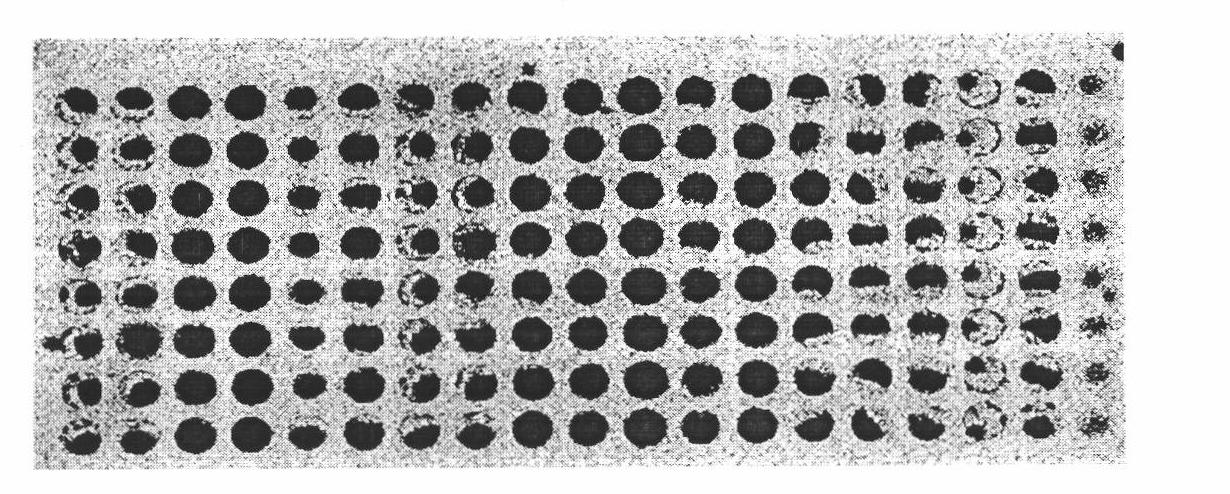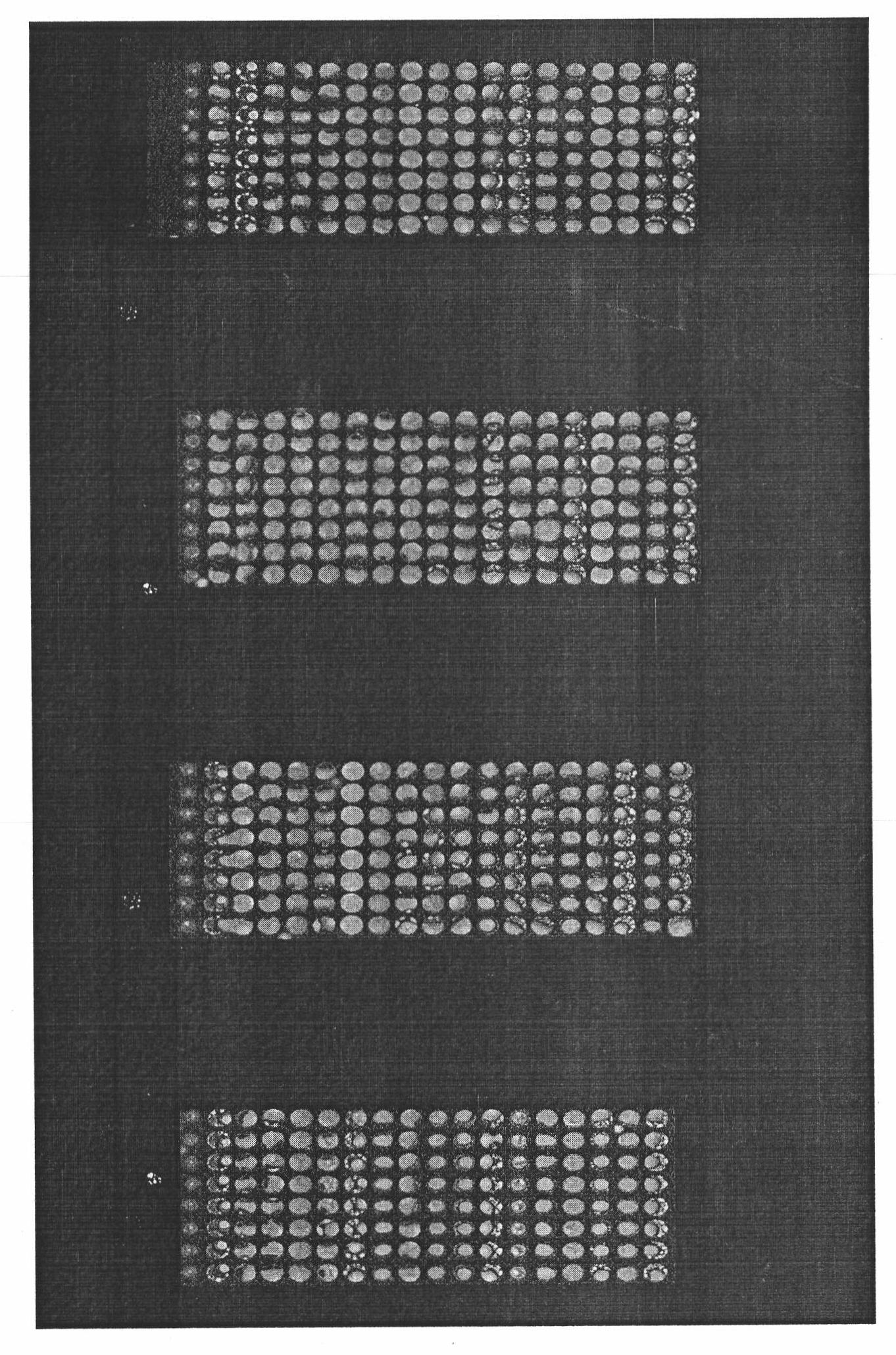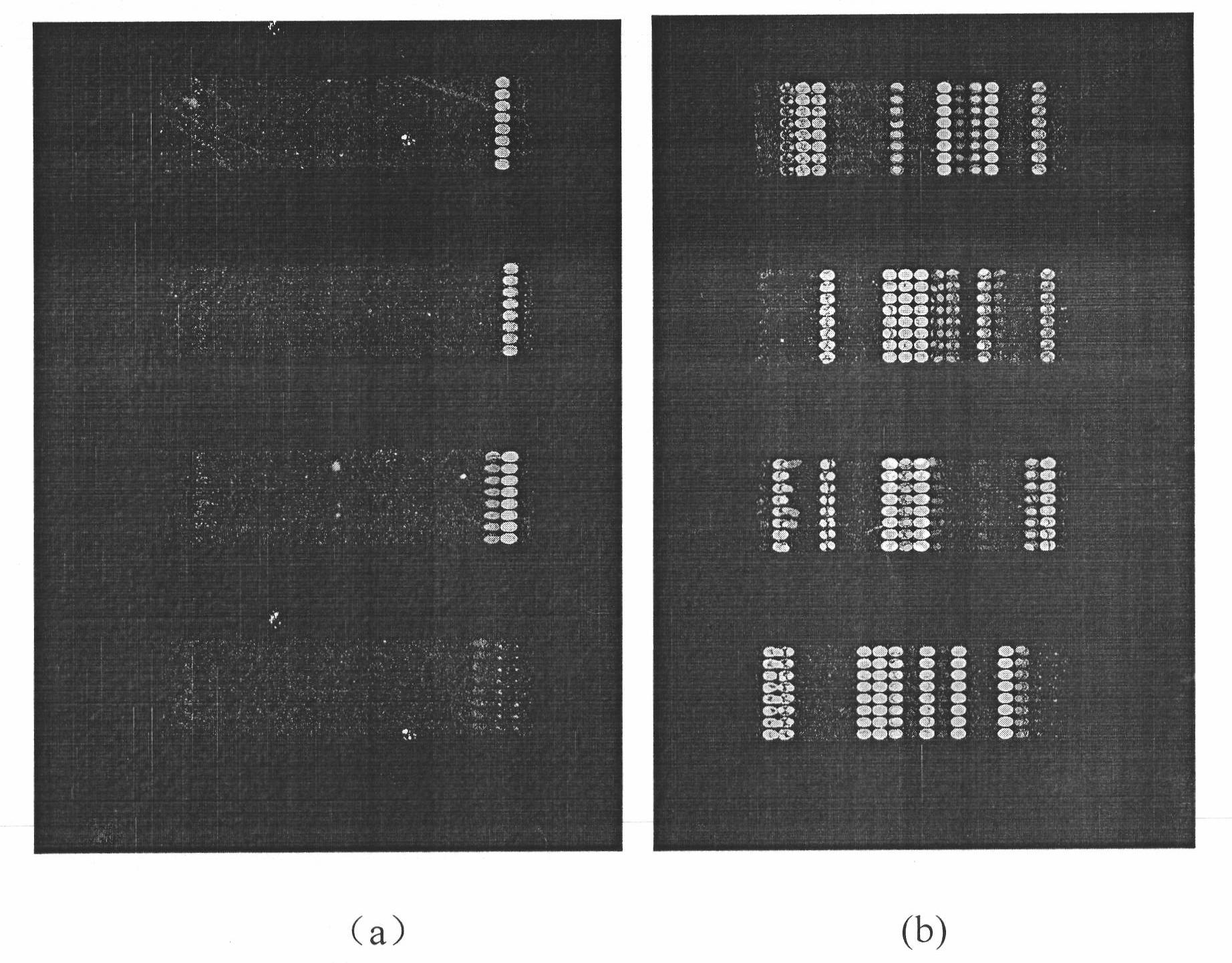Phytoplasma probe, gene chip and method for detecting phytoplasma
A gene chip and phytoplasma technology, which is applied in the high-pass detection gene chip, detects whether plant samples contain phytoplasma, and the field of phytoplasma probe, which can solve the problem of not being able to detect multiple phytoplasma with high throughput, and achieve the detection results. Output of normalized, highly specific, high-throughput assays
- Summary
- Abstract
- Description
- Claims
- Application Information
AI Technical Summary
Problems solved by technology
Method used
Image
Examples
example 1
[0105] Taking the detection of Guangzhou mulberry phytoplasma as an example to further illustrate the gene chip detection sample step of the present invention, the sample detection step is as follows:
[0106] 1) Plant RNA extraction: Take 1-2g of diseased leaves, cut them into small pieces, grind them into powder with liquid nitrogen, transfer them into a sterilized 1.5mL centrifuge tube, and extract the total RNA of the samples by conventional CTAB method.
[0107] 2) Amplification of phytoplasma-specific fragments: the extracted sample DNA is labeled by PCR amplification method, and the external reference positive control plasmid samples are mixed in equal amounts and then PCR-amplified and labeled with universal primers:
[0108] (1) PCR amplification:
[0109] Specific amplification reaction system (20μL):
[0110] DNA sample 0.1μg
[0111] Amplification primer pair (5μM) 1μL
[0112] 10×PCR Buffer 2μL
[0113] 2.5mM d(AGT)TP mix 2μL
[0114] 0.25mM dCTP 2μL
[0115...
PUM
 Login to View More
Login to View More Abstract
Description
Claims
Application Information
 Login to View More
Login to View More - R&D
- Intellectual Property
- Life Sciences
- Materials
- Tech Scout
- Unparalleled Data Quality
- Higher Quality Content
- 60% Fewer Hallucinations
Browse by: Latest US Patents, China's latest patents, Technical Efficacy Thesaurus, Application Domain, Technology Topic, Popular Technical Reports.
© 2025 PatSnap. All rights reserved.Legal|Privacy policy|Modern Slavery Act Transparency Statement|Sitemap|About US| Contact US: help@patsnap.com



